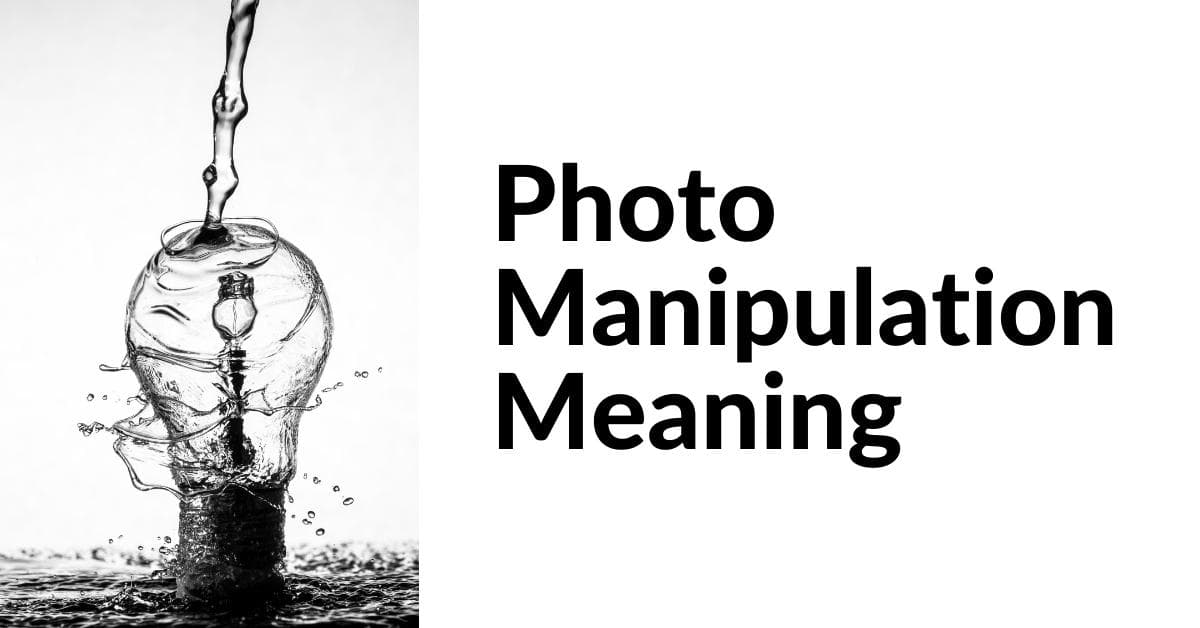In the era of digital photography and visual storytelling, photo manipulation has become an integral part of the creative process. It allows artists, designers, and photographers to transform ordinary images into extraordinary pieces of art. In this article, we will delve into photo manipulation meaning, explore the techniques involved, and address some frequently asked questions (FAQs) to help you understand this fascinating realm of digital artistry.
What Is Photo Manipulation?
Photo manipulation is a digital art form that involves altering, enhancing, or combining photographs to create visually compelling images. This process often blurs the lines between reality and imagination, enabling artists to bring their creative visions to life.
Key Elements of Photo Manipulation:
- Image Retouching: Photo manipulation often begins with basic retouching to improve the overall quality of an image. This may include adjustments to brightness, contrast, and color balance.
- Compositing: Combining multiple images to create a seamless, harmonious composition is a common technique in photo manipulation. Elements from different photos are integrated to form a cohesive narrative.
- Digital Painting: Some artists use digital painting techniques to add or modify elements within an image, such as creating fantasy landscapes or altering facial features.
- Texturing and Gradients: Incorporating textures and gradients can add depth and dimension to images, giving them a unique and artistic touch.
- Effects and Filters: Filters and special effects can dramatically change the mood and atmosphere of a photograph. This can include adding a vintage look, creating a cinematic effect, or mimicking traditional art styles.
Photo Manipulation Tools
Several software programs are widely used for photo manipulation:
- Adobe Photoshop: This industry-standard software offers a wide range of tools for photo editing and manipulation.
- GIMP (GNU Image Manipulation Program): A free and open-source alternative to Photoshop, GIMP is a powerful tool for artists and designers.
- Corel PaintShop Pro: Known for its user-friendly interface, PaintShop Pro provides comprehensive photo editing capabilities.
Ethical Considerations
While photo manipulation is a powerful form of artistic expression, ethical considerations come into play, particularly in journalism and advertising. It’s important to distinguish between creative manipulation for artistic purposes and deceptive manipulation meant to mislead the audience.
FAQs
1. Is photo manipulation the same as photo editing?
No, they are not the same. Photo editing typically involves making minor adjustments to enhance or correct an image’s quality, such as cropping, adjusting exposure, and removing imperfections. Photo manipulation, on the other hand, involves more extensive changes, often creating entirely new compositions.
2. Can I learn photo manipulation even if I’m not an artist or designer?
Yes, anyone can learn photo manipulation. There are plenty of online tutorials and courses that can help you get started, regardless of your background.
3. Is photo manipulation illegal or unethical?
Photo manipulation itself is not illegal, but the ethical implications depend on the context. Misleading manipulations in journalism or advertising can be considered unethical and may have legal consequences. Ethical photo manipulation should be transparent about its alterations.
4. What are some common beginner mistakes in photo manipulation?
Common mistakes include overuse of filters, poor blending of elements, and neglecting to consider lighting and perspective when compositing images. Practice and patience are key to improving your skills.
5. Can photo manipulation be a career?
Absolutely. Many graphic designers, digital artists, and illustrators build successful careers centered around photo manipulation. It’s a valuable skill in various industries, including advertising, media, and entertainment.
Conclusion
Photo manipulation is a captivating blend of art and technology that allows individuals to explore their creative potential and tell unique visual stories. As you venture into this exciting world, remember to balance your creative freedom with ethical responsibility, and keep refining your skills to unlock new dimensions of artistic expression.
Photo manipulation offers endless possibilities, limited only by your imagination and your choice of tools. Whether you’re a professional designer or a curious enthusiast, this form of digital art can be a deeply rewarding and enjoyable journey into the realm of visual storytelling. So, grab your digital canvas and start exploring the limitless potential of photo manipulation today.
This page was last edited on 19 February 2024, at 3:20 pm
